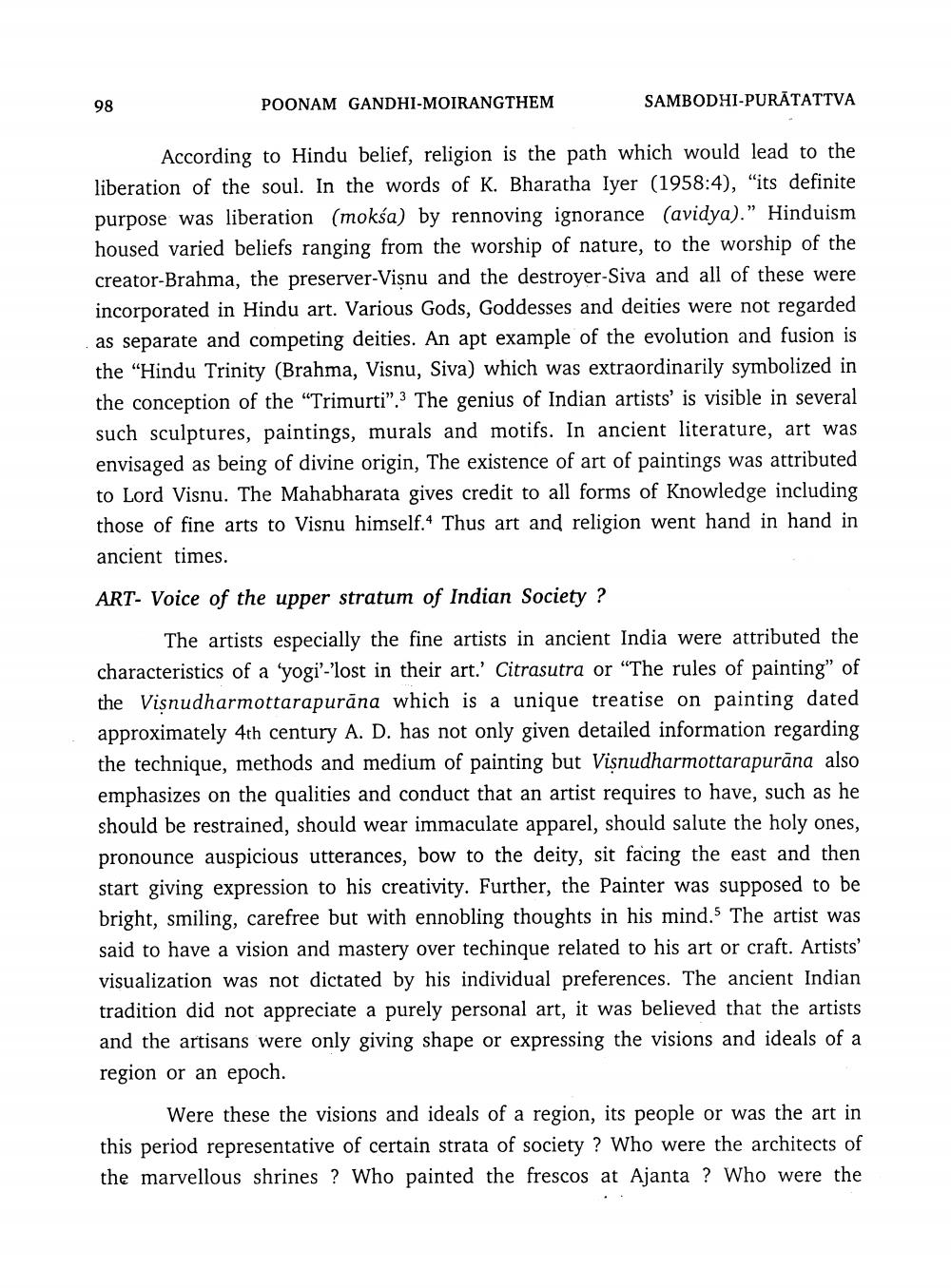________________
98
POONAM GANDHI-MOIRANGTHEM
SAMBODHI-PURĀTATTVA
According to Hindu belief, religion is the path which would lead to the liberation of the soul. In the words of K. Bharatha Iyer (1958:4), “its definite purpose was liberation (mokśa) by rennoving ignorance (avidya).” Hinduism housed varied beliefs ranging from the worship of nature, to the worship of the creator-Brahma, the preserver-Vişnu and the destroyer-Siva and all of these were incorporated in Hindu art. Various Gods, Goddesses and deities were not regarded as separate and competing deities. An apt example of the evolution and fusion is the "Hindu Trinity (Brahma, Visnu, Siva) which was extraordinarily symbolized in the conception of the “Trimurti". The genius of Indian artists' is visible in several such sculptures, paintings, murals and motifs. In ancient literature, art was envisaged as being of divine origin, The existence of art of paintings was attributed to Lord Visnu. The Mahabharata gives credit to all forms of Knowledge including those of fine arts to Visnu himself. Thus art and religion went hand in hand in ancient times.
ART- Voice of the upper stratum of Indian Society ?
The artists especially the fine artists in ancient India were attributed the characteristics of a 'yogi'-'lost in their art. Citrasutra or "The rules of painting" of the Vişnudharmottarapurāna which is a unique treatise on painting dated approximately 4th century A. D. has not only given detailed information regarding the technique, methods and medium of painting but Visnudharmottarapurāna also emphasizes on the qualities and conduct that an artist requires to have, such as he should be restrained, should wear immaculate apparel, should salute the holy ones, pronounce auspicious utterances, bow to the deity, sit facing the east and then start giving expression to his creativity. Further, the Painter was supposed to be bright, smiling, carefree but with ennobling thoughts in his mind." The artist was said to have a vision and mastery over techinque related to his art or craft. Artists' visualization was not dictated by his individual preferences. The ancient Indian tradition did not appreciate a purely personal art, it was believed that the artists and the artisans were only giving shape or expressing the visions and ideals of a region or an epoch.
Were these the visions and ideals of a region, its people or was the art in this period representative of certain strata of society ? Who were the architects of the marvellous shrines ? Who painted the frescos at Ajanta ? Who were the




